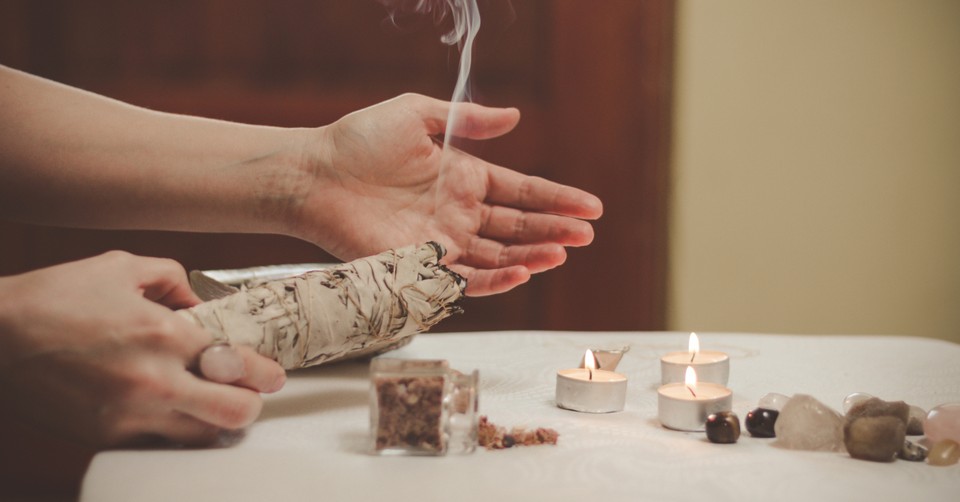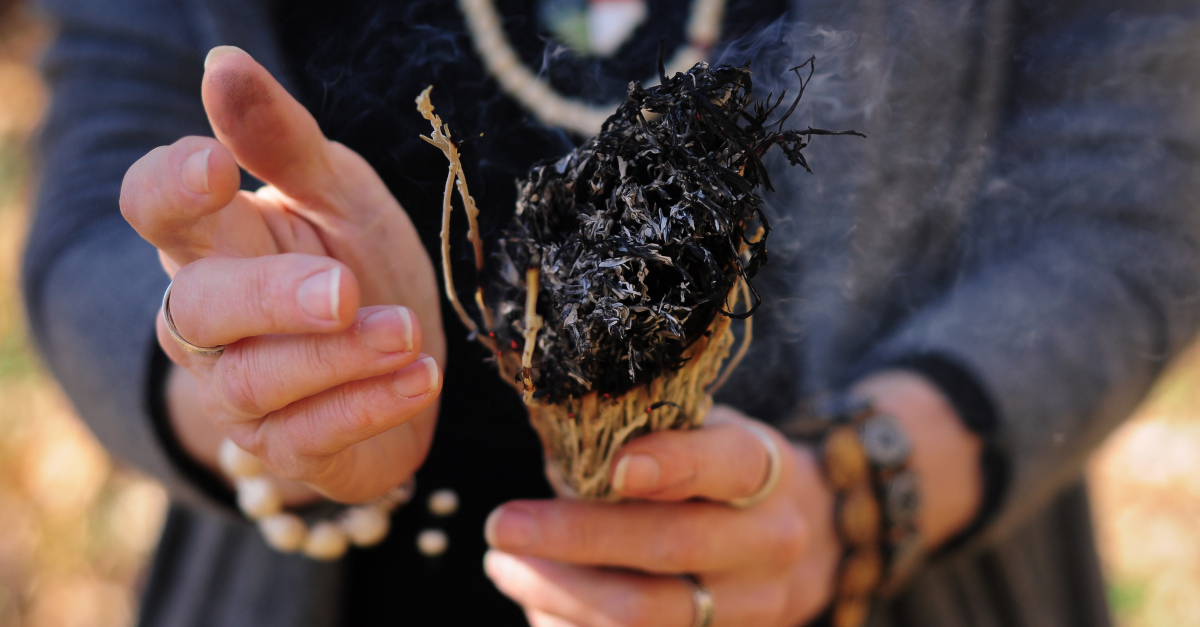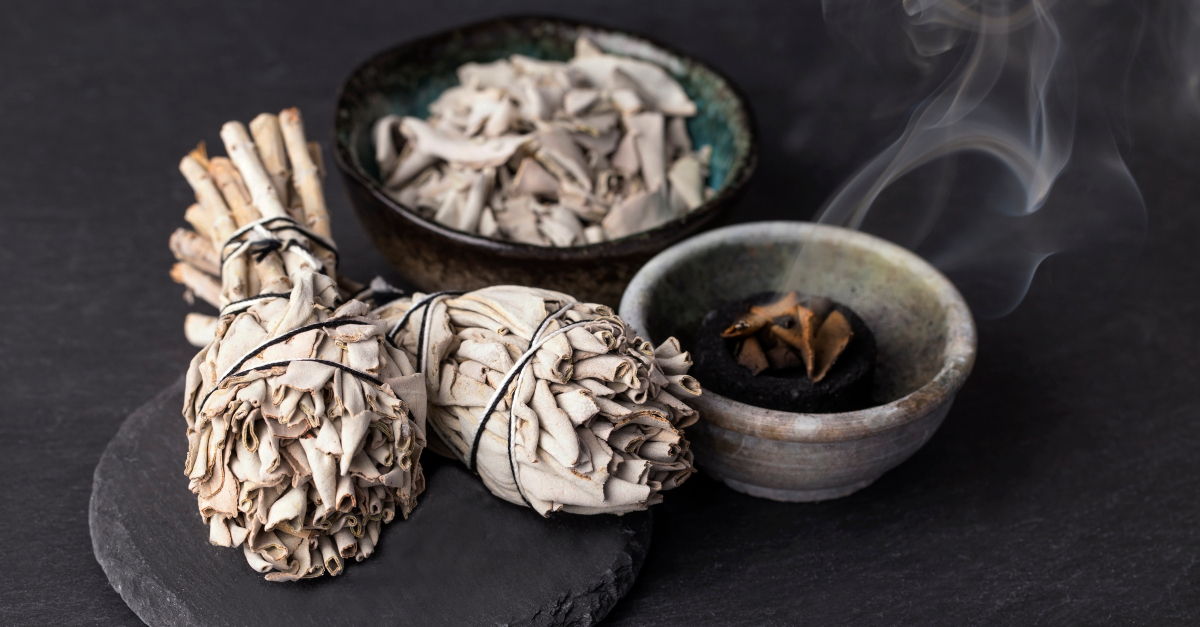Is Burning Sage a Biblical Practice or Witchcraft?

The burning of organic material and incense has been practiced by people all over the world since ancient times. Creating fragrant smoke has been used for spiritual purposes, medicinal purposes, and just to make things smell good for millennia.
Today, some controversy surrounds the subject of burning a particular kind of fragrant herb: sage.
Burning sage, also known as smudging, is used for a variety of purposes. Some of these purposes are occult in nature, while others are for supposed healing properties.
But is this practice acceptable for Christians?
Some Christians are vehemently against burning sage, citing biblical warnings against witchcraft. Others advocate the practice, sometimes pointing to the familiar ritual of the burning of incense in Catholic and Eastern Orthodox churches. Others still are in favor of some aspects of smudging, but not others.
Like many such things, burning sage is not inherently good or bad, as it is neither good nor bad to burn any dried plant. However, the intent behind the burning determines the acceptability of the practice.

What Is Sage and Is It in the Bible?
Sage is of the genus Salvia, part of the Lamiaceae family that includes mint. It can be found all over the world, from Salva officinalis, or garden sage, around the Mediterranean, to Salvia apiana, white sage or bee sage, a shrub native to the southwestern United States and northwestern Mexico.
Sage has long been used as an herb in Mediterranean cuisine, used for medicinal purposes, or grown ornamentally. The white sage of the American Southwest is a common, fragrant shrub that has been used for food and ritual practices by many Native American tribes for just as long.
Sage is not specifically mentioned in the Bible, though incense is a common theme. You can read several biblical passages about incense here.
What Is the Purpose and Practice of Burning Sage or Smudging?
Cultures all over the world have practiced the burning of herbs for millennia. Some Native American tribes would burn white sage in a practice that has become known as smudging.
Today, smudging has become popular in the mainstream as well. There are two main reasons people smudge: for spiritual purification, and for health benefits. We will explore each in turn.
It’s difficult to give a single explanation of how smudging is used for spiritual purposes, as the practice is diverse. Native American smudging ceremonies might be performed before or after a significant event, before meditation, or to ward off illness. In general, those who smudge for spiritual purposes, whether as an ancient practice, a New Age ritual, or for other reasons, do so to drive out negativity or evil spirits, cleanse the area, and increase healing and positive energy.
Burning sage is also done for medicinal reasons. Sometimes this is mixed with spiritual intentions, but for others, smudging is just part of natural healing methods.
Though studies are inconclusive on the effectiveness of burning sage, it is known to have antimicrobial and antibacterial properties, as well as drive away insects.
Another potential medical benefit, though unproven, is that burning sage can release negative ions, neutralizing positive ions in allergens like pet dander, dust, and mold. Thus, some claim that burning sage is helpful for those with allergies, asthma, and other respiratory issues—as long as the smoke is cleared from the room before the affected person returns.
Smudging may have mental health benefits as well. A 2016 study found that white sage has receptor-activating compounds that work with receptors in the brain to elevate mood levels, reduce stress, and even alleviate pain. Some research has shown that sage may be effective against insomnia and anxiety. There is also evidence that it may boost cognition and help with Alzheimer’s and dementia.
Smudging with sage is accomplished by acquiring a sage bundle or smudge stick. The end is lit into a slow smolder, releasing thick smoke. The smoke may be waved with a hand or a feather to direct it. In some cases, when used spiritually, a person will move clockwise (or counterclockwise) around the house, starting at the front door, giving special attention to corners. The smoke may also be directed over a person or object. It can also be left to smolder in a bowl or burner. Ash is caught in a receptacle such as a ceramic bowl or shell.
All elements of witchcraft fall under something we call spiritual attack and spiritual warfare? Need protection in your life now? Download our FREE Prayers for Spiritual Warfare guide to arm yourself today.
Why Burning Sage Is Considered an Occult or Witchcraft Ritual
When reading studies that examine this practice only as a natural curative in the vein of using essential oils or taking supplements, burning sage seems innocuous at first glance. However, its other uses are what can make it problematic.
Smudging, though it was believed to have curative properties, was not historically used from a purely medical, scientific standpoint. Like most healing practices until very recent times, it was based on some guesswork, some trial and error, some luck, and some superstition.
We now know sickness is brought by germs, not evil spirits or negative energy, and medicine has advanced accordingly. However, some still perceive smudging as beneficial for ridding themselves of both.
For those that follow New Age ideations, smudging can be used to purge their “auras” of negative energy or a space of bad vibes. Sometimes, smudging can be used in a ritualistic fashion to bless certain body parts, for example to open one’s ears or eyes to the spirit world. The smoke is supposed to attract good energy and drive out bad energy or evil spirits. Smudging may even be used on objects to purge them of the past.
Vibes, auras, and energy aren’t biblical ideas. Nor is the idea that smoke can drive out evil spirits. Anything having to do with the spiritual realm that is not approached from the basis of trusting in Jesus Christ is dangerous.
Are There Christian Ways to Use Sage for Healing or Cleansing?
We can’t chase off Satan with some fragrant smoke. The Bible is clear that God is the one that protects us from evil (2 Thessalonians 3:3). The Bible also teaches us that the world isn’t ruled by capricious “energies,” but rather by our Father God, in whom we can trust (Psalm 89:11).
Smoke does not cleanse our “aura,” or our soul. We are cleansed by the blood of Christ alone (Ephesians 1:7). Sage will not save us.
We don’t need pagan rituals to help us connect to God or experience spiritual growth. Witchcraft, pagan rituals, and sorcery are called an “abomination” and “detestable” by God in the Bible (Deuteronomy 10:9-13). He strictly prohibits His people from engaging.
On the other hand, there is nothing inherently bad about burning a nice-smelling plant. It’s also possible, though not proven, that sage may have some health benefits.
Sage should not be used for spiritual purposes. However, it is permissible for Christians to use the plant God created to enjoy its scent.

Biblical Practices with Herbs
Herbs and incense are frequently used positively in the Bible. Two of the three gifts from the wise men to Jesus were used for incense: frankincense and myrrh. Among other uses, myrrh was an ingredient in the anointing oil used in the Temple. Frankincense was frequently used as incense burned for worship before the Lord, directly commanded by God in Exodus 30.
Our prayers to the Lord are often compared to incense (e.g. Revelation 8:3-5, Psalm 141:2, Acts 10:4). Herbs, spices, and incense are mentioned frequently in the Bible, from Jesus’ parable of the mustard seed (Matthew 13:31-32) to the hyssop used to sprinkle blood on the doorframes of Hebrew homes to protect them during the tenth plague (Exodus 12).
The Bible does not demonstrate anywhere that God hates herbs, spices, and incense, and they are in fact sometimes used in the Temple to worship Him. However, these uses were carefully regulated and instated by God Himself.
Related Podcast:
Clearing Up the Confusion around Burning Sage
Burning sage is not inherently bad. The Bible does not mention sage, but other herbs and spices were used for food, incense, perfume, and even worship.
However, putting our trust in a ritual to save us, heal us, or drive out evil is foolhardy and contrary to God’s will. Instead, we are to put our trust in Him and His power to drive out sin and evil.
Sage might have healing properties. Some people may find that it smells nice. There is no harm in these things specifically, taken separately from occult practice.
However, it is important to remember Paul’s words in 1 Corinthians 10:23: “‘I have the right to do anything,’ you say—but not everything is beneficial. ‘I have the right to do anything’—but not everything is constructive.”
Just because we can do something doesn’t necessarily mean that we should. Just because something is not wrong doesn’t mean it is good.
Burning sage may not have any occult ties for you. It may feel no different than lighting a candle. As you exercise your freedom to do this, let us recall Paul’s words, “Be careful, however, that the exercise of your rights does not become a stumbling block to the weak” (1 Corinthians 8:9). Let us be cognizant of the feelings and struggles of other believers and act in ways that are uplifting and urge one another forward toward Christ.
At the end of the day, the Lord knows our hearts. May we proceed with honoring Him as our foremost goal.
What do you think? Have you seen or experienced this practice? Share your story and connect with other believers on Crosswalk FORUMS!
Photo Credit: ©GettyImages/RobertPetrovic

Originally published May 28, 2020.







